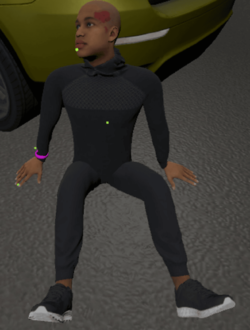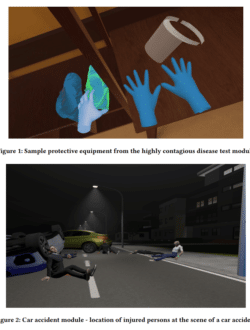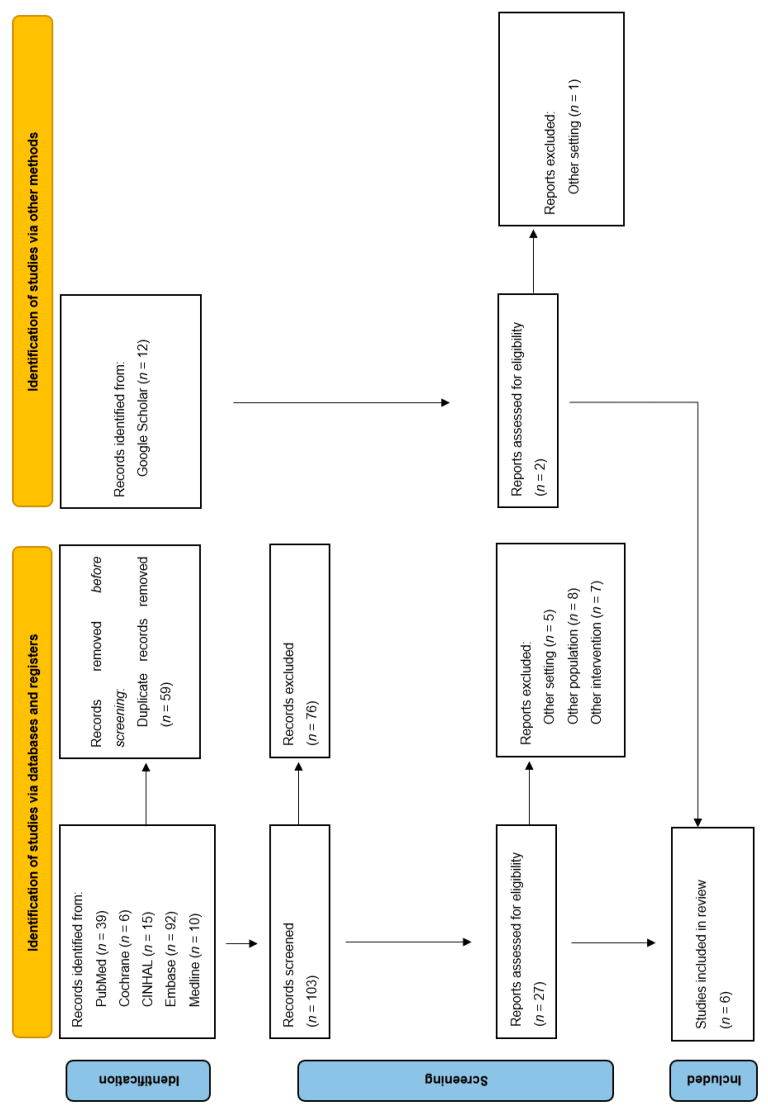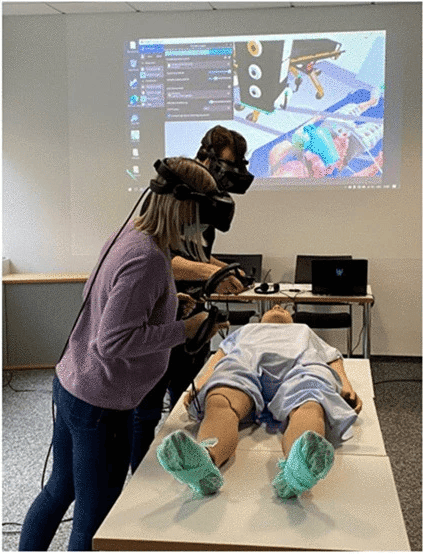Here at i3 Simulations, we’re always up-to-date with new research in simulation, education, and Extended Reality (XR) technology. We’ve decided to share this knowledge through a monthly blog series, where we’ll be sharing the latest evidence on how XR simulations are transforming medical training.

The Use of Virtual Reality in Training Paramedics for a Mass Casualty Incident
Lochmannová, A. et al. (2022) – Applied Sciences
In a recent study, researchers designed a virtual reality training module for paramedics to practice responding to mass casualty incidents, such as a major car crash. The module was developed based on action research involving observations of a large-scale tactical training exercise and feedback from participating paramedics and mock victims.
The immersive VR scenario allows paramedics to arrive at a simulated crash scene, triage multiple injured patients, and provide emergency care, without the logistical challenges of real-world exercises. The study found that the VR training offered a safe, repeatable, and cost-effective way to supplement traditional training methods and better prepare paramedics for high-stakes, low-frequency events.
Use of virtual reality for education and training of emergency rescue system for crisis situations
Bednář, M. et al. (2023) – International Conference on Education Technology and Computers
In a related study, researchers developed three virtual reality training modules to help prepare paramedics for crisis situations, such as a highly contagious disease outbreak or a serious car accident with multiple casualties. The immersive VR applications allow paramedics to practice donning personal protective equipment, triaging and treating injured patients at a simulated crash scene and using an automated external defibrillator.
The modules include both an educational component guided by a virtual avatar and an assessment component to test skills. Initial testing with paramedic students and experienced professionals found the VR training to be realistic, intuitive, and useful for learning key protocols. Some technical limitations were identified, but overall, participants felt VR was a valuable complement to traditional training methods.


Designing and Evaluating a Virtual Reality Training for Paramedics to Practice Triage in Complex Situations
Vogt, P. et al. (2023) – Lecture Notes in Computer Science
In another related study, researchers designed and evaluated a virtual reality training program to help paramedics practice triage skills in complex mass casualty incidents. Using a user-centred, iterative design process, they collaborated closely with paramedics and trainers to create an immersive VR simulation. Paramedics can practice examining and triaging multiple virtual casualties in a realistic environment, while dealing with distractions like bystanders and background noise.
The VR training was integrated with a briefing and debriefing system to facilitate a complete learning experience. In testing with 32 paramedics, the VR training scored highly on measures of motivation and user experience. Trainers felt it was a valuable supplement to existing training methods.
Virtual Reality and Augmented Reality Training in Disaster Medicine Courses for Students in Nursing: A Scoping Review of Adoptable Tools
Magi, C.E. et al. (2023) – Behavioral Sciences
In this scoping review, researchers examined the use of VR and augmented reality (AR) training tools for educating nursing and paramedic students about disaster medicine and mass casualty incidents. They analysed six studies published between 2016 and 2022 that compared VR simulations to traditional teaching methods like lectures and written instructions. The studies used various VR setups, from head-mounted displays to game-based apps, to immerse students in realistic disaster scenarios for triage and evacuation training.
Overall, the VR interventions showed promise in enhancing students’ practical skills, knowledge retention, and engagement compared to conventional approaches. While none of the included studies utilized AR, the authors note its potential benefits. They conclude that VR and AR offer cost-effective, repeatable, and safe training opportunities to better prepare students for these high-stakes situations. Educators should weigh factors like learning objectives, audience, and available resources when selecting training modalities.


Virtual team training with Mixed Reality and Virtual Reality – benefits and limitations illustrated on the example of two paramedic classes
Elsenbast, C., Dahlmann, P. and Schnier, D. (2024) – Multimedia Tools and Applications
Finally, in this quasi-experimental study, researchers compared the impact of VR and mixed reality (MR) training on paramedic students’ learning experiences in a simulated emergency scenario. One group of students trained in a fully virtual environment, while the other group used MR with a physical manikin integrated into the virtual scene. After the training, both groups reported high intrinsic motivation, an acceptable sense of presence, and good usability ratings. However, some participants experienced symptoms of VR sickness, particularly disorientation and oculomotor issues. The MR group had significantly lower amotivation scores than the VR group.
Correlations were found between motivation, usability, and presence in both conditions. The authors conclude that VR and MR can be effective learning tools when implemented thoughtfully by competent faculty. They recommend using setup checklists, a competency-based approach, clear expectations (a “fiction contract”), and structured debriefing. Wireless VR headsets and haptic gloves may enhance the experience.
What did the research find?
In summary, the research found that virtual reality (VR) and mixed reality (MR) training can be valuable tools for educating paramedic and nursing students about disaster response, triage, and mass casualty incidents:
- Several studies compared VR simulations to traditional training methods like lectures, written materials, or manikin-based exercises. VR generally showed promise in enhancing practical skills, knowledge retention, motivation, and engagement.
- One study integrated a physical manikin into a VR scene, creating an MR environment. Both VR and MR groups reported high motivation and sense of presence, but the MR group had lower motivation.
- Recommendations include using setup checklists, focusing on competencies, setting clear expectations, providing debriefing, and exploring haptic feedback solutions.
Overall, the findings suggest VR and MR can meaningfully supplement paramedic and nursing disaster training when designed and implemented well. The technologies allow students to practice high-stakes skills in safe, repeatable, and engaging virtual environments
To find out more information about XR technology in simulation training, check out our evidence overview, trial the training software, or contact us for more information and any research questions!





